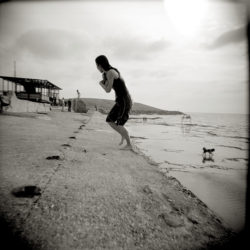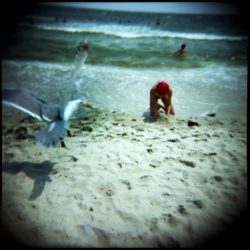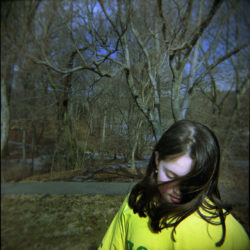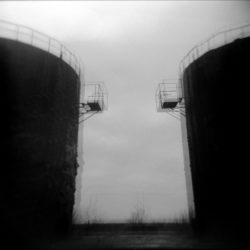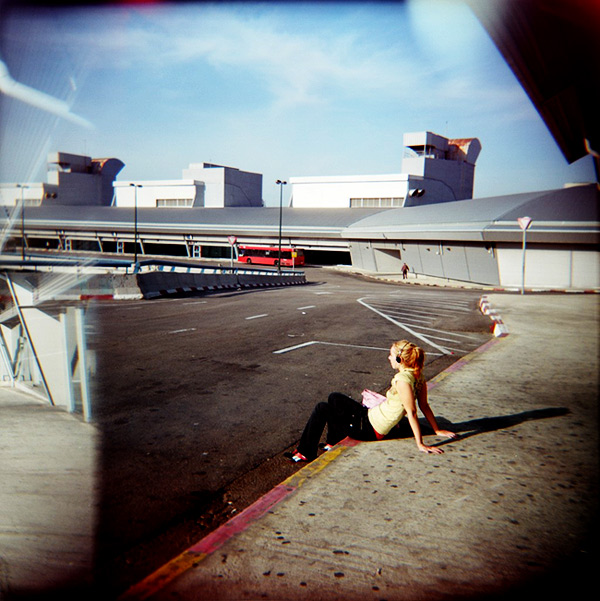
Holga — «Very bright»!
FotoDepartament Information center/Bureau
presents
photo exhibit HOLGA – «VERY BRIGHT»
Victor Ginzburg / Boston
Vitala Tauz / Tel-Aviv
Alexey Tikhonov / St. Petersburg
2 – 30 May 2007
Exhibition hall / Nevsky prospect, 20
V. V. Mayakovsky Library Center
Opening reception – 2 May at 6.30 PM
25 years ago in Hong Kong they created something which the photo experts still avoid called a camera. It is a plastic photo camera Holga – a cheap medium-format device, originally meant for unpretentious customers of Hong Kong and China. Holga – is European for «ho gwong», which can be translated as «very bright». It’s hard to tell now, how they managed to come up with the original Chinese name. perhaps it had to do with diaphragm setting, which had only two position, for sunny and not-so-sunny weather?
Medium format was probably chosen because in the beginning of 1980s, 6-cm film was more widely used in China than 35-mm one. As we know, that situation has changed quickly. But it didn’t make Holga a commercial failure, no – the number of users is growing by day.
Today, the plastic medium-format toy is very popular. And not among those who normally use disposable cameras. Holga is well liked by photo artists, teaching photography courses, and even serious photo journalists. Why? Michael Bates, the author of the book «Plastic cameras: creative play», calls this camera «an antidote against the technological tyranny». True: Holgs has nothing automatic, but it doesn’t have a wide choice as far as settings are concerned, all manipulations are very approximate. At that the optic effects, of which these cameras are capable may be compared with the options of wide-angle cameras, the intricate devices bellows and on tripods.
One thing is different: every particular Holga will always produced the same types of distortions. A plastic camera with ill-matching lid and slightly lopsided «weak-sided» lens, as a living being would, has its individuality, and you can’t argue with that. The only thing a photographer can do is to adapt himself to Holga.
The number of «technology antidote» lovers keeps growing. The participants of this exhibit are the living example of how it happens. Three photographers from different countries, each with own photographic method and preferences turned out to be equally touched by a plastic camera.
First interest towards Holga has expressed the Israeli photo artist, Vitala Tauz. In 2003 the camera fell in her hands and since has become favorite instrument. In 2005, Boston photographer Victor Ginzburg came to St. Petersburg to his exhibit. His friends asked him to bring a few Holga cameras – you can’t get them in Russia, they must be ordered directly from Hong Kong or bought elsewhere. At the same time, Ginzburg bought a toy for himself, too – he was actually thinking of getting a new camera. And one of Holga cameras brought by Ginzburg was meant for Alexey Tikhonov.
Victor Ginzburg:
Holga is not imposing, it looks like a toy, weighs next to nothing, everybody knows that it shoots poorly, no one is afraid of it, no one is hiding from it. You can photograph what you have thought up only approximately, this is why I rarely bother to think ahead, and sometimes forger to wind the film up to next frame. Looking at the developed film shot on Holga could be compared to unwrapping birthday presents – you never know what’s inside. And when I catch the beauty brought by Holga, I feel the same joy as I do with good shots produced by a normal camera.
Vitala Tauz:
Few years ago I saw for the first time the shots produced on Holga. To say that I was impressed is to say nothing. I was totally struck by the surreal pictures. The unique effect of «inner look» was created by means of a toy camera «of superb cheap plastic», as one of the reviews put it. The next step was getting my own Holga. From that very moment we rarely part – the compact, almost weightless thing permits me to drag her along practically anywhere I go. I like the fact that the camera is not only a docile helper in photographer’s hands, but also a full-fledged co-author of a creative process, and has its character and temper.
Alexey Tikhonov:
One can say that the traditional cameras look «with eyes wide open». This doesn’t quite compare to a human look. As a near-sighted person I know that when you are walking in a windy snowy weather on a solitary embankment, you don’t open your eyes wide, it’s unnatural. And if, in fact you also have a fever of say, 37.5 C, than, strange as it seem, you find the industrial cityscape amazingly ‘in sinc’ with how you feel. And you like and appreciate all the more the charm of post-industrial aesthetics.
Te full-fledged, «sane» camera does not convene this sensation quite well. And weak-sighted paralyzed Holga capable on focusing on a single fragment of a shot, in this situation becomes a very close friend indeed.
The exhibit runs through May 30.
The exhibited works can be purchased online through FotoDepartament website.


